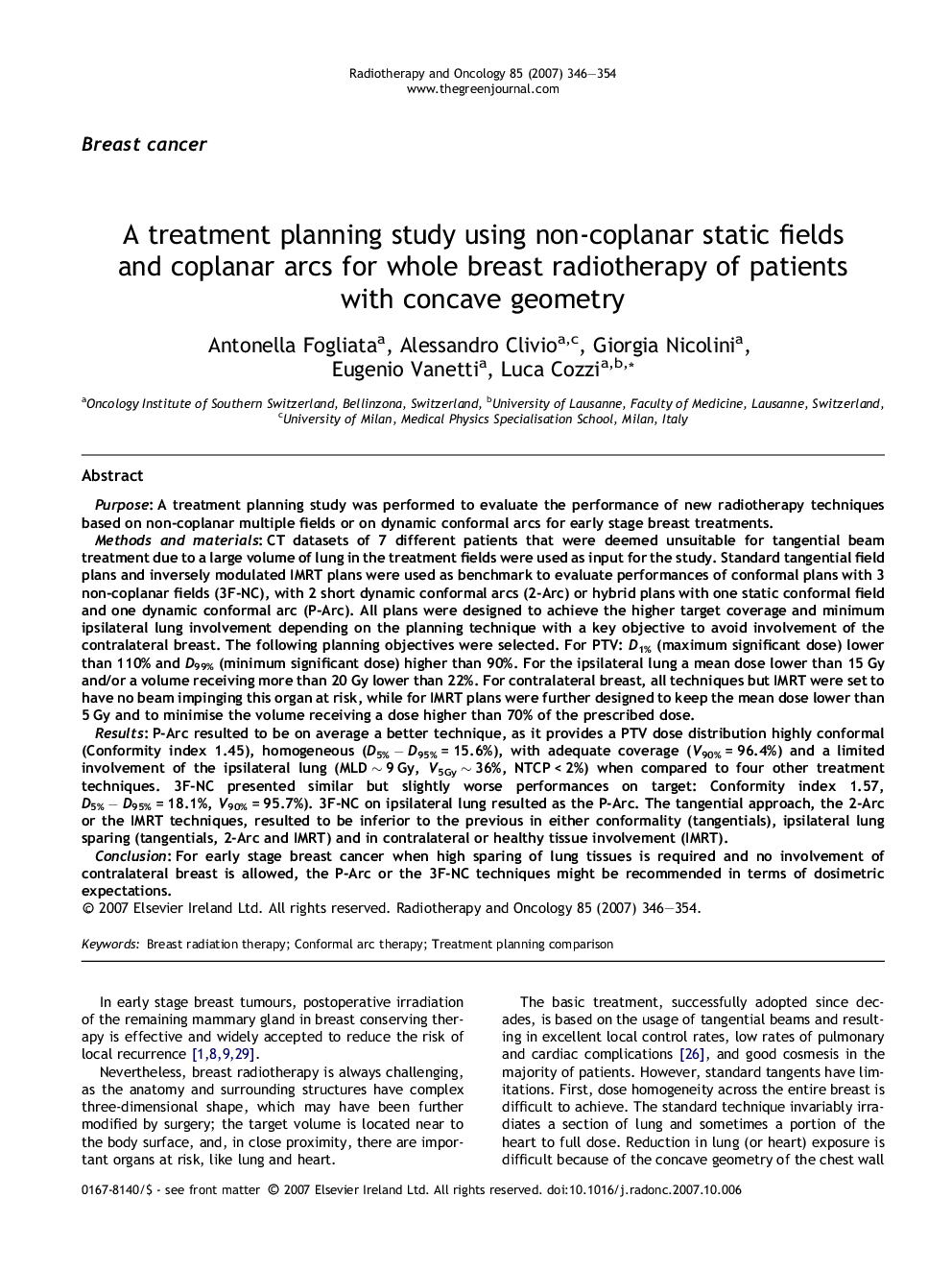| کد مقاله | کد نشریه | سال انتشار | مقاله انگلیسی | نسخه تمام متن |
|---|---|---|---|---|
| 2160601 | 1090889 | 2007 | 9 صفحه PDF | دانلود رایگان |

PurposeA treatment planning study was performed to evaluate the performance of new radiotherapy techniques based on non-coplanar multiple fields or on dynamic conformal arcs for early stage breast treatments.Methods and materialsCT datasets of 7 different patients that were deemed unsuitable for tangential beam treatment due to a large volume of lung in the treatment fields were used as input for the study. Standard tangential field plans and inversely modulated IMRT plans were used as benchmark to evaluate performances of conformal plans with 3 non-coplanar fields (3F-NC), with 2 short dynamic conformal arcs (2-Arc) or hybrid plans with one static conformal field and one dynamic conformal arc (P-Arc). All plans were designed to achieve the higher target coverage and minimum ipsilateral lung involvement depending on the planning technique with a key objective to avoid involvement of the contralateral breast. The following planning objectives were selected. For PTV: D1% (maximum significant dose) lower than 110% and D99% (minimum significant dose) higher than 90%. For the ipsilateral lung a mean dose lower than 15 Gy and/or a volume receiving more than 20 Gy lower than 22%. For contralateral breast, all techniques but IMRT were set to have no beam impinging this organ at risk, while for IMRT plans were further designed to keep the mean dose lower than 5 Gy and to minimise the volume receiving a dose higher than 70% of the prescribed dose.ResultsP-Arc resulted to be on average a better technique, as it provides a PTV dose distribution highly conformal (Conformity index 1.45), homogeneous (D5% − D95% = 15.6%), with adequate coverage (V90% = 96.4%) and a limited involvement of the ipsilateral lung (MLD ∼ 9 Gy, V5Gy ∼ 36%, NTCP < 2%) when compared to four other treatment techniques. 3F-NC presented similar but slightly worse performances on target: Conformity index 1.57, D5% − D95% = 18.1%, V90% = 95.7%). 3F-NC on ipsilateral lung resulted as the P-Arc. The tangential approach, the 2-Arc or the IMRT techniques, resulted to be inferior to the previous in either conformality (tangentials), ipsilateral lung sparing (tangentials, 2-Arc and IMRT) and in contralateral or healthy tissue involvement (IMRT).ConclusionFor early stage breast cancer when high sparing of lung tissues is required and no involvement of contralateral breast is allowed, the P-Arc or the 3F-NC techniques might be recommended in terms of dosimetric expectations.
Journal: Radiotherapy and Oncology - Volume 85, Issue 3, December 2007, Pages 346–354